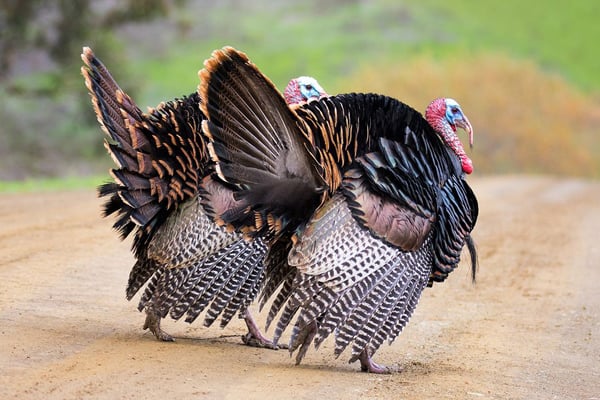Prime
How to earn more from turkeys

A single turkey can fetch a farmer Shs120,000 or more during the festive season.
What you need to know:
- The free range system is the most suitable for the average smallholder farmer because it is cheaper in terms of investment and management.
Turkeys can be reared in two ways, free-range or intensive system. The free range system is the most suitable for the average smallholder farmer because it is cheaper in terms of investment and management.
Turkeys are aggressive scavengers and, therefore, would thrive in free range rearing systems. It is recommended that one should rear 60 birds on quarter an acre. The farmer is required to fence the area and construct a night shelter at the rate of 2.5 to 3.5 square foot per bird.
One should also create paddocks for rotational purposes as well as disease prevention. The greatest disadvantage in the free range system is increased parasite (worms and mites) susceptibility and predators.
It is, therefore, necessary to regularly de-worm and dip the birds. In intensive farming system, heavy investment is required. This mainly goes into the construction of shelters, watering systems, feeding structures and feeds. The shelters should be well-ventilated, water and predator-proof.
This system also requires intensive care and management thus more human labour is required, which means additional expenses. Litter/bedding (sawdust) lining the houses should be changed regularly to prevent the spread of diseases.
The houses should be regularly fumigated and disinfected. This system leads to increased productivity and reduces disease-incidence, especially worms.
Feeding
The birds feed on commercial mash and pellets, which are readily available in agrovets. However, inclusion of greens in the diet is highly recommended. For the greens, farmers can use lettuce, spinach or sukuma wiki.
Farmers can also invest in hydroponic farming for supply of green matter. Use of hydroponic fodder is cost-effective as compared to commercial feeds. It is also important to supplement the diet with calcium to help make the legs stronger.
Clean water should be provided throughout the day. The feeders and drinkers should be cleaned daily and disinfected. Turkeys also require food that is high in protein so that they can mature fast and remain healthy.
You can prepare a mixture of maize flour with ground silverfish (mukene) in addition to other feeds that you may buy from your nearest agro-vet.
Other routine practices
De-beaking: This prevents cannibalism and feather pecking. Debeaking is done when the poults are between two and five weeks old.
A farmer can engage a veterinary officer or use traditional methods like hot metal blade.
De-toeing: This is done mainly on male poults three days after hatching. Detoeing prevents cannibalism which commonly occurs when the birds are kept under stressful conditions.
De-snooding: It encompasses the removal of the red snoods or dew bills (the fleshy extension found near the base of the neck).
This is necessary as the snood is often pecked thus resulting in head wounds. The excision of the snoods should be undertaken by trained personnel at three weeks of age.
Handling turkeys: One should pick the birds by the legs but this is often discouraged. Young poults should be picked from behind and tucked under the arm, with the legs tightly secured by the other hand.
Research
Before venturing into turkey farming, do a thorough feasibility study. You can begin by visiting local turkey farmers or agricultural offices in your area. Learn about the market (demand and supply), opportunities, and challenges. Some of the obstacles include high feed prices and diseases. The demand for turkey is relatively stable and peaks during holiday. You can practise poultry farming for domestic or commercial purposes. Whatever your goal is, ensure that you get a return on your investment.
Benefits
A turkey hen lays 15 eggs over a period of one month and requires 28 days to incubate with an 80 percent hatchability.
Assuming your two females lay and hatch poults successfully, then your flock will grow to 25 turkeys. You can sell some and keep some.
Market
While chicken market booms mostly on holidays and other celebrations like Christmas, turkey meat is on demand almost all the time.




